- Home
- J. R. R. Tolkien
The Nature of Middle-earth Page 3
The Nature of Middle-earth Read online
Page 3
At the present rate of 365 days 5 hrs. 48 mins. 46 secs. to 1 year:
The nearest approximate equivalents are thus:
In the narrative time lengths of less than the Valian Second are seldom mentioned; and less than the Valian Quart (2 mins.) practically never.
III
OF TIME IN ARDA
While I have not felt obliged to retain the precise order of texts as found in the “Time and Ageing” file, I have done so for the first five texts that follow, because Tolkien appears to have selected, relabelled, and (in the case of the first three) assigned them Roman numerals, in such a way as to indicate a plan to assemble a larger work from them, to be titled “Of Time in Arda”.
In the case of the first text, originally called “Time-scales”, Tolkien assigned it a number and a new title:
I. The Quendi compared with Men
The second text, originally called “Youth of the Quendi”, was likewise assigned a number and a new title:
III. Natural Youth and Growth of the Quendi
(If there ever was a text II, it appears no longer to reside in the “Time and Ageing” folder.) The third text was simply assigned a number, otherwise retaining its original title:
IV. Summary of the Eldarin traditions concerning the “Awakening” and of the Legend of the Cuivië (Cuivienyarna)
Additionally, all the sides of these texts (that had not previously been struck through) were then renumbered continuously from 1–15.
All these modifications were made in red ball-point pen, which may be significant to the titles supplied in the top margins of the sides of the subsequent two texts, likewise in red ball-point pen (though they were not assigned a number nor were their sides renumbered continuously with the first three texts). Thus:
Awaking of the Quendi
was written in the top margins of the sides of both versions of the fourth text, and:
March
was written in the top margins of the sides of both versions of the fifth text, which originally had the title of just “Quendi”.
Apparently subsequent to the selection and modifications of the first three texts, Tolkien began a new typescript version of the assembled texts (though in the event only getting part-way through the newly renamed first text), which thus now serves as a sort of cover sheet for them. This typescript occupies two sheets, with the text ending at the bottom of the second sheet. All Elvish terms are typed with a red ribbon, as is the extensive footnote on Quenya terms for “love”. As far as it goes, this typescript closely follows the manuscript version, presented here as chap. IV, “Time-scales”, below, but with enough differences in detail that I give it here in full.
OF TIME IN ARDA
I
The Quendi compared with Men
The Valar having entered Arda, and being therefore confined within its life, must also suffer its slow ageing, perceiving it as a growing weight upon them, since they are to the total erma of Arda in many ways similar to the fëar within the corporeal hröar of the Incarnate (hröambari).[1]
The Quendi, being immortal within Arda, also aged with Arda as regards their hröar; but since, unlike the Valar whose true life was not corporeal and who assumed bodily forms at their own will as raiment, the being of the Quendi was incarnate, and consisted naturally of the union of a fëa and a hröa, this ageing was felt chiefly in the hröa.
This, as the Eldar say, was slowly “consumed” by the fëa, until instead of dying and being discarded to dissolution it became absorbed, and eventually became no more than the memory of its habitation of old which the fëa retained; thus they have become now usually invisible to human eyes. But this has taken long ages to come about. In the beginning the hröar of the Elves, being supported and nourished by the great strength of their fëar, were vigorous, resisting hurts, and healing such as they suffered swiftly from within. Their ageing was therefore extremely slow by the measure of Men, though they were in their earlier days as “physical” as Men, or even more so: more strong, energetic, and swift in body, and taking greater delight in all bodily pleasures and exercises.
If we disregard the actual time, measured in the sun-years of Middle-earth, but use “years” merely as units of measurement in the growth from birth to maturity proper to each kind, it will be observed that the Elves closely resembled Men in this process. They reached maturity (of the body) at about the age of 20, and remained in full physical vigour till about the age of 60. After that the fëa and its interests began to dominate them. At the age of about 100 one of the Quendi had reached a stage similar to that of a Mortal of full age and wisdom. The normal period, therefore, for marriage and the begetting and bearing of children and their nurture (which were among the greatest delights of the Quendi in Arda) was between about the ages of 20 and 60.
The Quendi differed, however, from Men in several important aspects, if we speak only of them in the early ages of their life in Arda.
1. Their fëar never reached maturity in the sense that they ceased to be able to grow, by further increase of knowledge and wisdom; but they did reach a stage when memory (of thought and labour, and of the events of history, general and to each one particular) began to be a burden, or at least began more and more to occupy their minds and emotions. This development, however, which marks the true “ageing” of the Elves, did not concern the Elder Days, and first became evident during the Second Age, increasing rapidly during the Third Age when the Dominion of Men was finally achieved.
2. Individuals were more variable even than among Men. This may be ascribed to the variability of the Elvish fëar in native force and talents (greater than any variation seen among Men), and the more powerful influence which these fëar exerted upon their bodies. The ages, therefore, defined above: 20, 60, 100: are only general and approximate. After maturity their minds and wills had far more control than is the case with Men over the events of the body, and over the direction and serial ordering of the uses of the body’s powers. For instance, at maturity one of the Quendi could marry and at once enter into the Onnarië or ‘Time of the Children’. But they could postpone marriage; or within marriage postpone the Onnarië (by absence or abstinence): either because they were otherwise occupied in pursuits that absorbed their attention; or because they had not yet found one whom they wished to marry, or as Men say “fallen in love”;[fn1][2] or for reasons of prudence or necessity, as in times of trouble, wandering, or exile.
Postponement of the fulfilment of marriage affected the time in which the hröa remained in full vigour; for the use of these bodily powers absorbed, relatively to Men, more of the vitality of the Quendi, and more also (though in less degree) of the youth of the fëa. So that in certain cases marriage might take place between Quendi of the age of 60 or even more years.
IV
TIME-SCALES
This text is (for the most part) a clear manuscript written in black nib-pen in a mostly careful hand, on ten sides of five sheets of unlined paper. Tolkien’s often lengthy, interpolated notes (here given as footnotes) are in a smaller and italic hand, but likewise careful. It was later supplied with some marginal notes (here given as footnotes) and additions in red ball-point pen. The text dates to c. 1959.
Time-scales
The Valar having entered Arda, and being therein confined within its life, must also suffer (while therein and being as it were its spirit, as the fëa is to the hröa of the Incarnate) its slow ageing.[1] The Quendi being immortal within Arda also aged with Arda as regards their hröar; but since, unlike the Valar, whose true life was not corporeal and who assumed bodily forms at will as raiment, their being was incarnate and consisted naturally of the union of a fëa and a hröa, this ageing was felt chiefly in the hröa.[2] This, as the Eldar say, was slowly “consumed” by the fëa, until instead of dying and being discarded to dissolution it became absorbed and eventually became no more than the memory of its habitation of old which the fëa retained: thus they became or have now become mostly invisible to human eyes.[3] But th
is has taken long ages to come about. In the beginning the hröar of the Elves, being supported and nourished by the great strength of their fëar, were vigorous, resisting hurts, and healing such as they suffered swiftly from within. Their ageing was, therefore, extremely slow by mortal standards, though they were in their early days as “physical” as Men, or even more so, more strong, vigorous, and swift in body, and taking greater delight in all bodily pleasures and exercises.
If we disregard the actual time, measured in the sun-years of Middle-earth, but use “years” merely as the units of measurement in the growth from birth to maturity proper to each kind, it will be observed that the Quendi resembled the Atani in this process. Their fëar never reached maturity in the sense of ceasing to be capable of further increase of knowledge and wisdom; but they did reach a stage when memory, both of thought and labour (as well as of the events of history, general and to each one particular), began to be a burden, or began more and more to occupy their thought and emotion. But this development, which marks the “ageing” of the Quendi, did not concern the Elder Days, and first became evident during the Second Age, increasing rapidly during the Third Age when the Dominion of Men was finally achieved.
The hröar of the Quendi had, however, a definite rhythm and process similar to that of Men. They reached maturity at about the age of 20,[fn1] and remained in full physical vigour till about the age of 60, after which the fëa and its interests began to assume command. After about the age of 90–96 one of the Quendi had reached a stage similar to that of a vigorous and hale Mortal of high age and wisdom.[4] The normal period, therefore, for marriage and the begetting and bearing of children and their nurture (which were one of the greatest delights of the Quendi in Arda), was between about the ages of 20 and 60.
The Quendi differed, however, from Men in the following important aspects, if we speak only of them in the earlier ages of their life in Arda. Individuals were more variable, so that the ages defined above (of 20, 60, 90) are only general and approximate.[5] After maturity (at about 20) their minds and wills had far more control over the events of the body and over the direction of the uses, and the serial ordering of the uses, of the body’s powers and functions. For instance, after maturity one of the Quendi could marry and at once enter into the “Time of the Children”. But they could postpone marriage; or within marriage postpone the “Time of the Children”. Either because they were otherwise occupied in pursuits that absorbed them; or because they had not found a “desired spouse” (or as Men say “fallen in love”);[fn2][6] or for reasons of prudence or necessity imposed by circumstances, as in times of trouble, wandering, and exile.
Postponement of the fulfilment of marriage affected the length of time in which the hröa remained in full vigour of maturity. For the use of these bodily powers absorbed, relatively to Men, more of the corporeal vigour of the Quendi, and more also (though in less degree) of the “youth” of the fëa.[fn3] So that in certain cases marriage might take place between Quendi of the age of 60 or even (rarely) of greater age.
It may also be noted that in each Elvish life there was normally only one period of begetting or bearing children, whenever begun; and that the length of this period was variable, as were the number of children produced. It might occupy from 12 to about 60 years (occasionally more).[7] The children numbered usually 2, 3, or 4. One was exceptional, and could be due to different causes: for instance, the separation of the spouses, as in the case of Idril, daughter and sole child of Turgon of Gondolin whose wife Anairë of the Vanyar would not go with the Ñoldor into exile, but remained with Indis (also of the Vanyar) widow of Finwë.[8] In other cases the spouses (one or both) might not desire more than one child. This was rare, and in the histories of the Elder Days occurred only when some child of exceedingly great qualities was born which (as the Eldar say) demanded far more of the vigour and life of the parents than a normal child. The most eminent case was that of Míriel mother of the most gifted of all the Ñoldor, Feänor. Another case was that of Lúthien, daughter of Elwë and Melyanna (Elu Thingol and Melian);[9] though this case was also unique in that Melyanna was not an Elf but of the race of the Valar, a Maia.[fn4][10]
A greater number than four was rare, though in the early days of the full vigour of the Eldar five or six children are recorded to have been born to one pair of spouses.[fn5] Seven was wholly exceptional, and indeed among the High-elves only the case of Feänor is recorded. He had seven sons. The last two were twins: Amrod and Amras. Twins were very rare, and this is the only case recorded of the Eldar in the ancient histories, except for the twin sons, Eldún and Elrún, of Dior Eluchil, but he was half-elven. In later times (Third Age) Elrond had twin sons.[11]
It must be remembered, however, in considering the records and legends of the past, that these (especially those made by or handed down through Men) often only mention or name persons who play a recorded part in the events, or were the direct ancestors of such chief actors. It cannot therefore be concluded from silence alone, whether in narrative or in genealogy, that any given person had no children, or no more than are named.
An elven-child was borne in its mother’s womb for about the same (relative) time as a mortal child, that is for about ¾ of a “youth-year” = ¾ of 12 löar = 9 löar;[fn6] though in the Quendi this period was more variable, often being less, and on rare occasions being more.[12] It is said that Feänor remained in the womb for one growth-year (12 löar).[13]
The onnalúmë, or ‘Time of the Children’, was in normal lives a continuous series, occupying some 12 to 60 years.[14] The interval between the birth of a child and the next birth was usually one “growth-year” = 12 löar; but was often more, and in a continuous series tended to become longer (more rest being needed) between each birth. Thus 12 löar before the 2nd birth, 24 before the 3rd, 36 before the 4th, 42 before the 5th, and 48 before the 6th. But the intervals could be longer and not necessarily in exact twelves.[15]
But in comparing Quendi with Men it must be observed that the unit (called a “year”) was of quite different actual length in the case of the Quendi. Similar differences occur in comparing other “kinds” of growing creatures, or even other varieties of similar kinds. (Thus animals “age” at different rates measured by Years of Middle-earth – MY or sun-years – and so do different varieties of Men; so did even different varieties of the Quendi: the Eldar grew to maturity less quickly than did the Avari.)[16]
In their beginning the Quendi grew at a rate in which the “unit” was the yên or Elven-year, which was 144 MY. If then an elf-child grew to a maiden and a young woman in about 20 “years”, wedded at 25 and bore her first child at 26, her age in mortal terms would be 2,880 at maturity, 3,600 at wedding, and 3,744 at childbirth.
This speed of growth and rate of ageing had nothing to do with the perception of time. As the Eldar say of themselves (and this may in some degree also be true of Men) when persons (in whole being fëa and hröa) are fully occupied with things of deep natural concern and of delight to them, and are in great bliss and health, Time seems to pass quickly and not the reverse. The minute enjoyment and appreciation of events and thoughts in the time-series does not, as might be supposed, make Time seem longer, as might a road or path that was minutely inspected. For that inspection could only be carried out by slowing the rate of normal travel. But the rate of normal progress through Time cannot be slowed; but the speed of thought and action can be quickened so as to achieve more in a given space of time.[17]
Thus the Quendi did not and do not “live slowly”, moving ponderously like tortoises, while Time flickers past them and their sluggish thoughts! Indeed, they move and think swifter than Men, and achieve more than a Man in any given length of time.[fn7] But they have a far greater native vitality and energy to draw upon, so that it takes and will take a very great length of time to expend it.
Thus we may observe that all matters of growth and development, which belong to the separate nature of the hröa, engaged in its own process of achieving its comp
lete and mature form, and which are not under the will or conscious control of the fëa, proceed far slower among the Quendi than among Men. Gestation, therefore, proceeds according to the growth and ageing scale of the Quendi, and occupies ¾ yên, or 108 MY.[18]
During all this time the parents are aware of the growth of the unborn child, and live in much longer and more deeply-felt joy and expectation; for childbirth is not among the Eldar accompanied by pain.[19] It is nonetheless not an easy or light matter, for it is achieved by a much greater expense of the vigour of hröa and fëa (of “youth” as the Eldar say) than is usual among Men; and is followed after the begetting by a time of quiescence and withdrawal.[20] The Elf-women also are usually quiescent and withdrawn before and after birth. For these reasons, the Eldar did not (if they could avoid it) enter into the “Time of the Children” in times of trouble, or wandering. There were thus no marriages or births during the Great March; nor again during the journey of the Ñoldor from Aman to Beleriand, and births were few during all the War against Morgoth. For the same cause, Men who had dealings with the Eldar often saw far less of the Elf-women, and might even be unaware that some Elven-king or lord had a wife. For the withdrawal and quiescence of the wife might occupy the whole time of his sojourn among the Eldar, or indeed much of his whole mortal life-time. For this “withdrawal”, occupying from three to four “months” or twelfths of a “year”, that is one quarter to one third of a yên, would in mortal terms endure for about 36 to 48 years.[fn8]

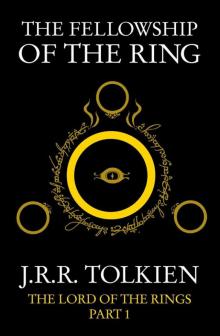 The Fellowship of the Ring
The Fellowship of the Ring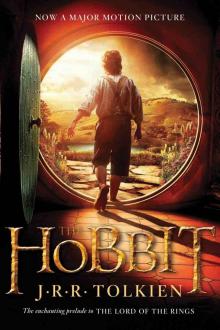 The Hobbit
The Hobbit The Two Towers
The Two Towers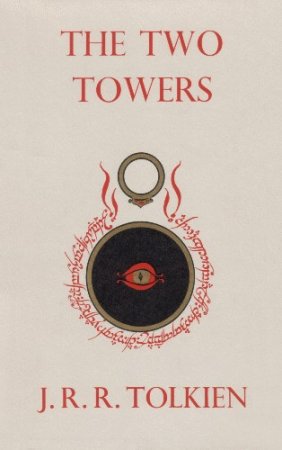 The Return of the King
The Return of the King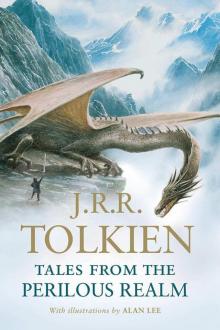 Tales From the Perilous Realm
Tales From the Perilous Realm Leaf by Niggle
Leaf by Niggle The Silmarillon
The Silmarillon The Book of Lost Tales, Part Two
The Book of Lost Tales, Part Two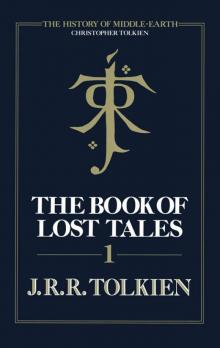 The Book of Lost Tales, Part One
The Book of Lost Tales, Part One The Book of Lost Tales 2
The Book of Lost Tales 2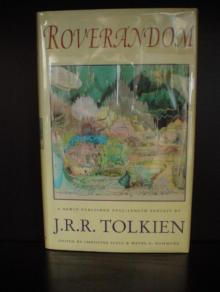 Roverandom
Roverandom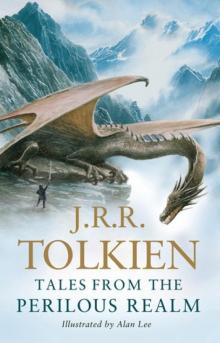 Smith of Wootton Major
Smith of Wootton Major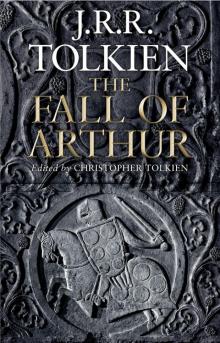 The Fall of Arthur
The Fall of Arthur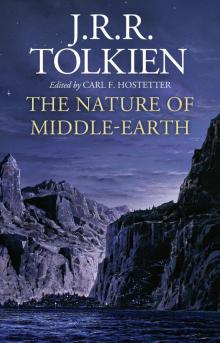 The Nature of Middle-earth
The Nature of Middle-earth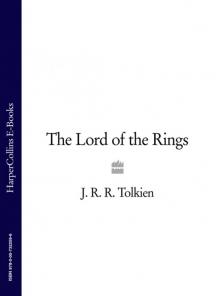 The Lord of the Rings: The Fellowship of the Ring, The Two Towers, The Return of the King
The Lord of the Rings: The Fellowship of the Ring, The Two Towers, The Return of the King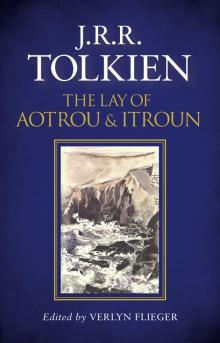 The Lay of Aotrou and Itroun
The Lay of Aotrou and Itroun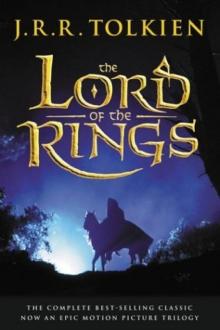 lord_rings.qxd
lord_rings.qxd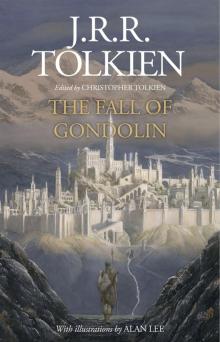 The Fall of Gondolin
The Fall of Gondolin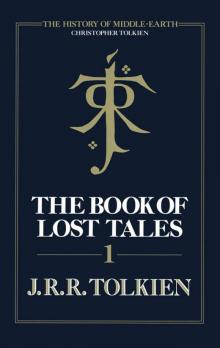 The Book of Lost Tales, Part 1
The Book of Lost Tales, Part 1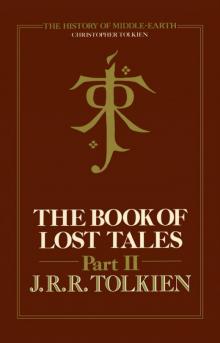 The Book of Lost Tales, Part 2
The Book of Lost Tales, Part 2 The Lord of the Rings
The Lord of the Rings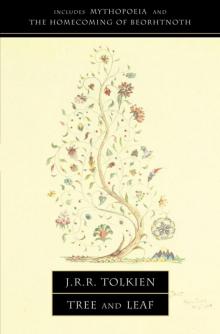 Tree and Leaf
Tree and Leaf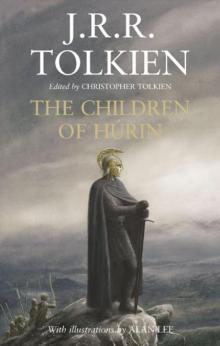 The Children of Húrin
The Children of Húrin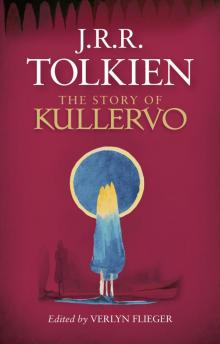 The Story of Kullervo
The Story of Kullervo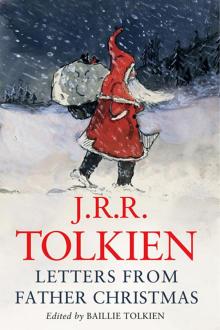 Letters From Father Christmas
Letters From Father Christmas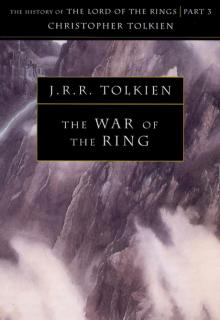 The History of Middle Earth: Volume 8 - The War of the Ring
The History of Middle Earth: Volume 8 - The War of the Ring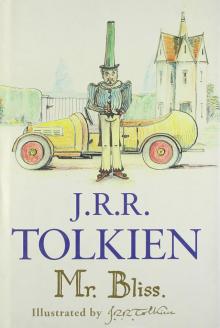 Mr. Bliss
Mr. Bliss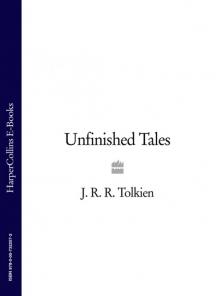 Unfinished Tales
Unfinished Tales The Adventures of Tom Bombadil
The Adventures of Tom Bombadil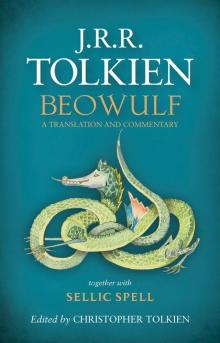 Beowulf: A Translation and Commentary, together with Sellic Spell
Beowulf: A Translation and Commentary, together with Sellic Spell The Silmarillion
The Silmarillion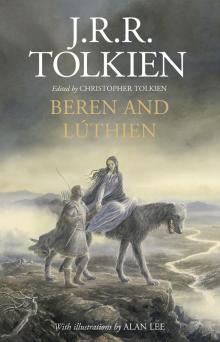 Beren and Lúthien
Beren and Lúthien